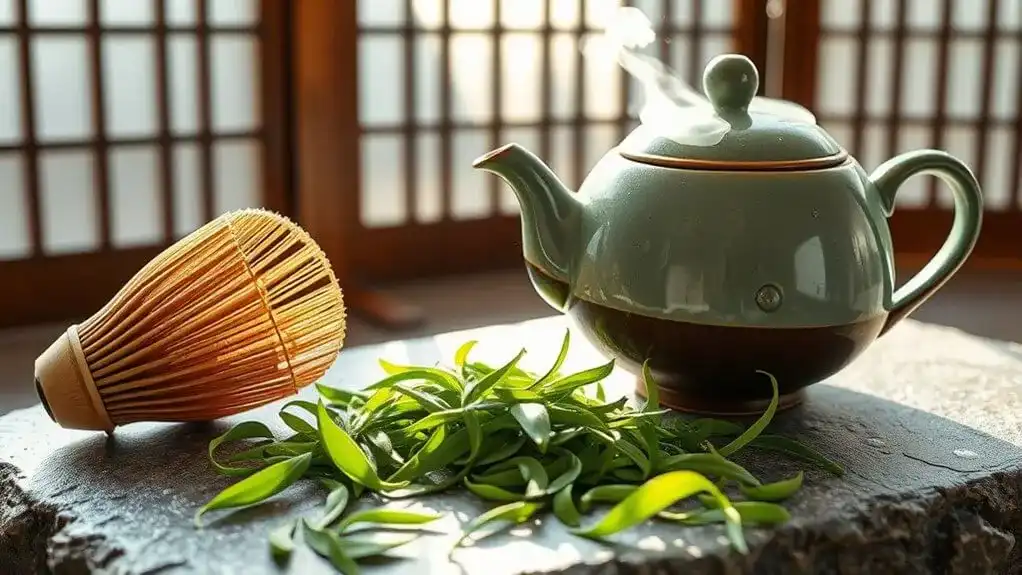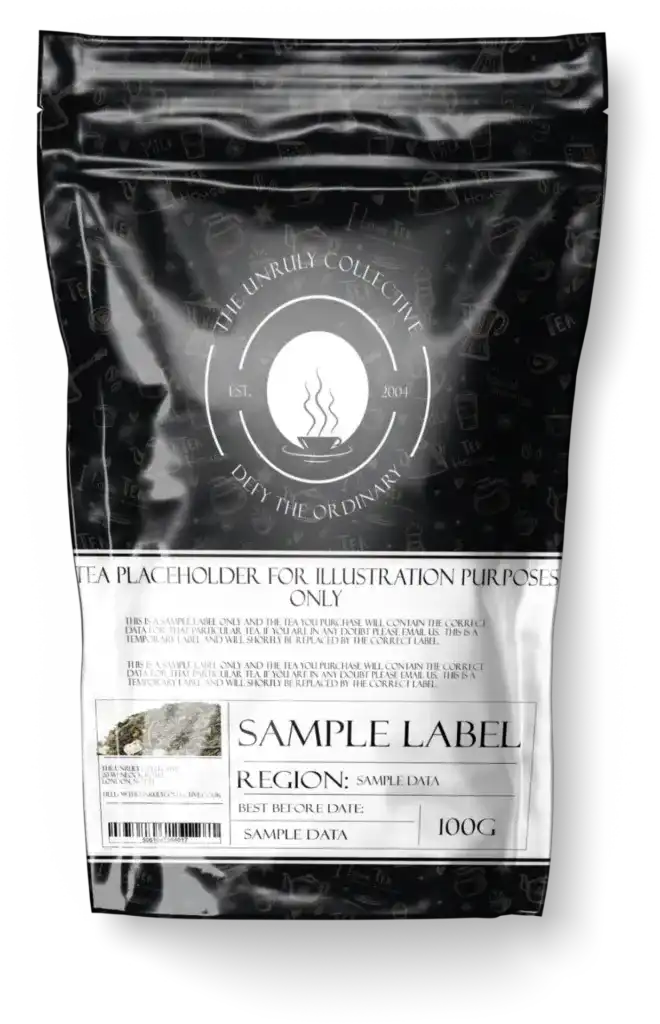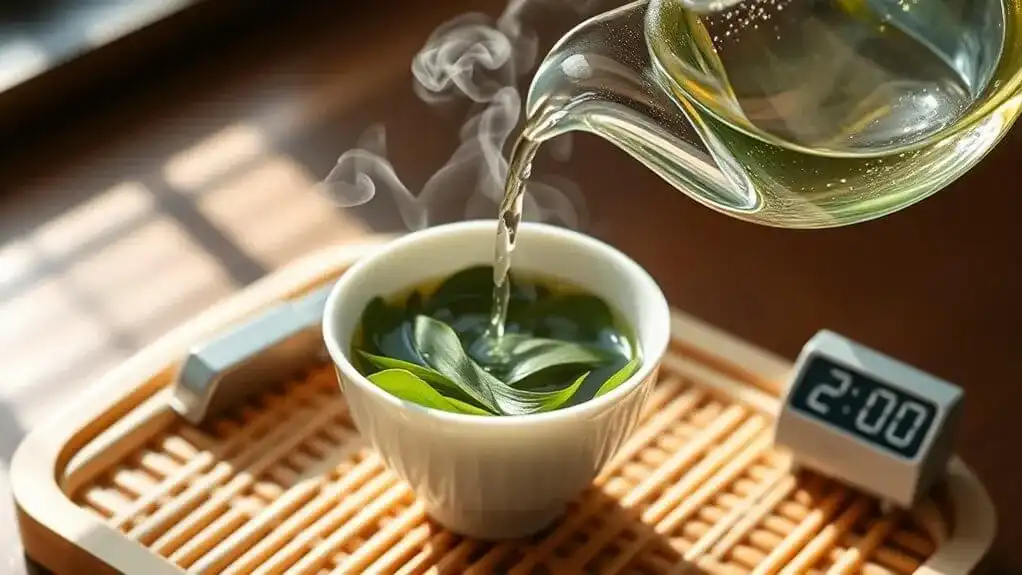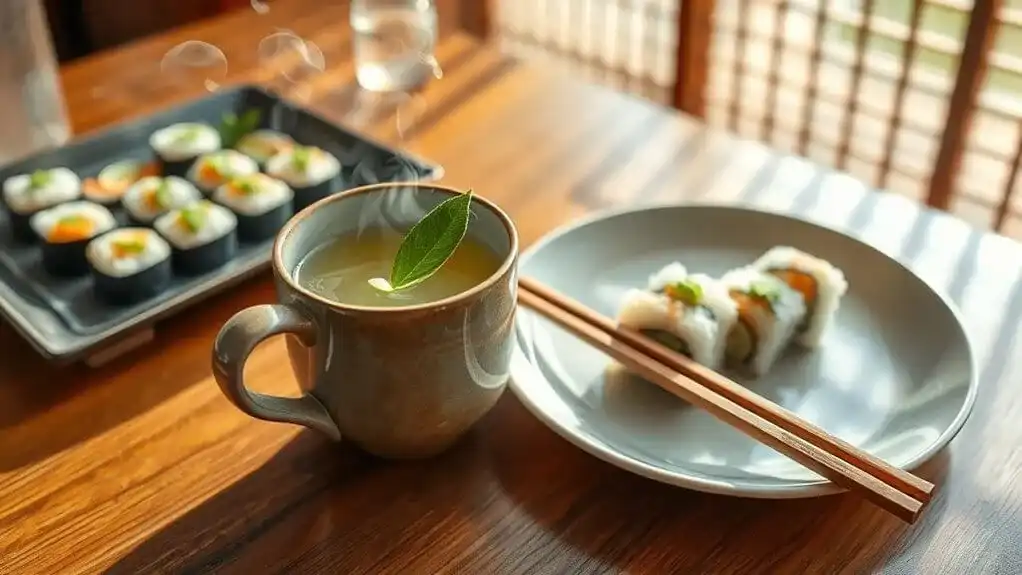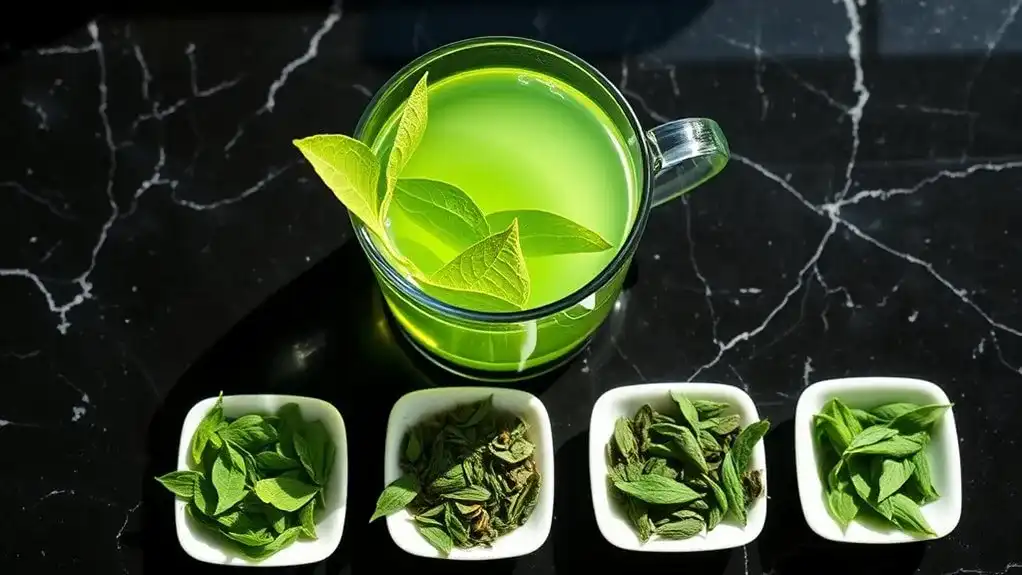Sencha production combines ancient techniques with modern methods, starting with careful leaf harvesting and precise steaming processes. Traditional hand-rolling (temomi) takes 6-7 hours for just 300g of tea, while machine processing enables mass production. The steaming duration, ranging from 30-200 seconds, greatly impacts the tea's final character. Proper brewing requires 3-5 grams of leaves per 150-500mL water, with specific temperature and timing adjustments. There's much more to discover about this intricate Japanese art form.
Key Points
- Traditional sencha processing begins with steaming fresh leaves for 30-200 seconds to halt oxidation and preserve essential flavors.
- Hand-rolling (temomi) takes 6-7 hours for 300g of tea, creating superior flavor profiles compared to machine processing.
- Multiple drying phases reduce leaf moisture from 75% to 5%, while developing the characteristic needle shape and aroma.
- Light steaming (30-40 seconds) preserves leaf integrity for clear brew, while deep steaming (60+ seconds) creates smoother taste.
- Optimal brewing requires 3-5 grams per 150-500ml water, with 60-second steeping for regular sencha and 45 seconds for fukamushi.
The Art of Steaming: Foundation of Sencha Processing
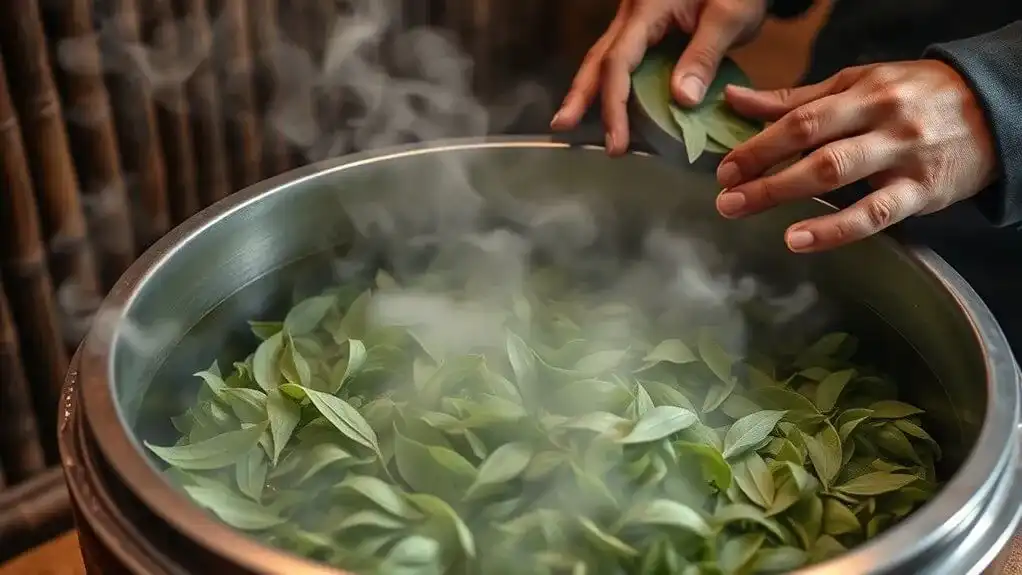
While many tea processing methods have evolved over centuries, steaming remains the foundational step in crafting authentic Japanese Sencha. Two primary steaming techniques have emerged: the traditional light steaming method that takes 30-40 seconds, and the deep steaming process developed in the 1960s that extends beyond 60 seconds. For optimal results during brewing, these steamed leaves should be prepared with water at 70-80°C.
These distinct approaches create markedly different flavor profiles. Light steaming preserves the tea leaves' original shape and produces a clear brew with intense aroma, distinct bitterness, and astringency. In contrast, deep steaming breaks down the leaves more thoroughly, resulting in a smoother, richer taste with reduced bitterness and increased body. The process also affects the tea's appearance, with light-steamed varieties maintaining leaf integrity while deep-steamed versions yield a more fragmented product and darker green liquor. The light steaming technique was established by Soen Nagatani in 1738, marking the beginning of modern sencha production in Kyoto Prefecture. After steaming, the leaves undergo rolling for hours to release moisture and create the characteristic needle-like shape of sencha.
Hand Rolling vs. Machine Processing: A Detailed Comparison
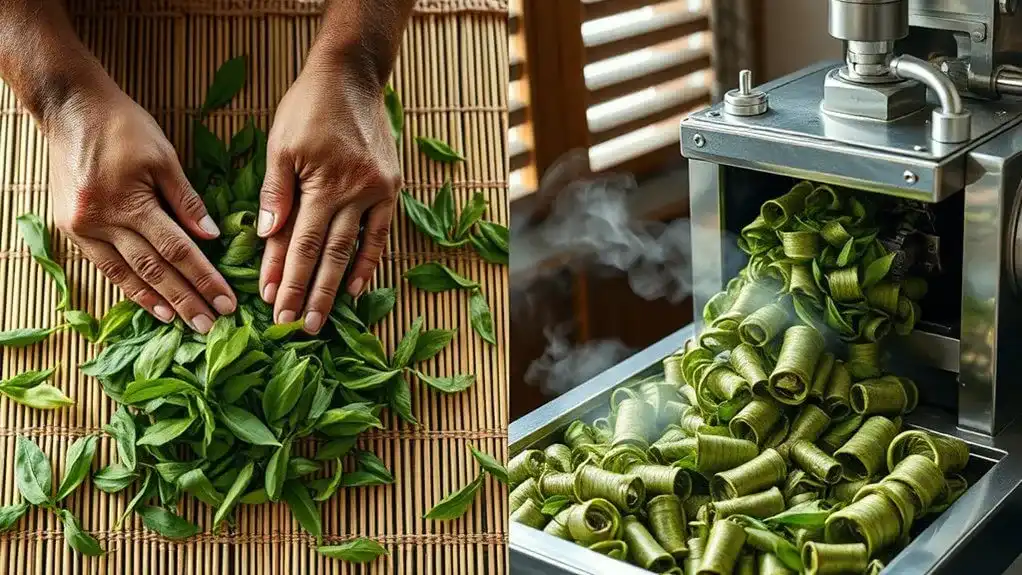
Although modern machinery dominates today's sencha production, the traditional art of hand rolling (temomi) remains the gold standard for exceptional quality tea. The meticulous hand rolling process spans 6-7 hours for just 300g of tea, involving skilled craftsmen who perform specific techniques like kaitenmomi and dengurimomi to enhance flavor nuances and aroma. The wooden drying table used during the steaming process helps maintain proper temperature control and moisture levels. The process was pioneered by Sou-en Tagatani in 1738, revolutionizing how green tea was processed in Japan. The traditional practice relies on early morning harvesting when tea buds are still chilled and covered with dew for optimal quality.
While machine efficiency has revolutionized sencha production, enabling mass processing and standardization, there are notable craftsmanship differences between the two methods. Hand-rolled leaves retain their natural shape and offer superior brewing adaptability, opening more evenly during steeping. The processing techniques used in hand rolling create a more complex flavor profile that's less astringent than machine-processed alternatives. This artisanal approach, though time-intensive, produces tea that's more forgiving with brewing parameters while delivering consistently superior results.
Essential Steps in Traditional Sencha Production
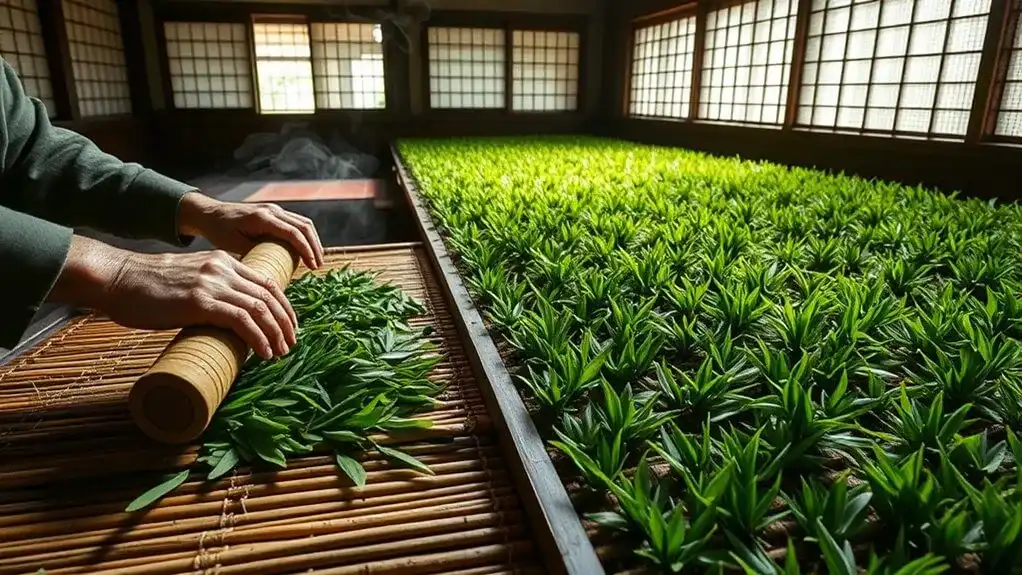
Traditional sencha production follows a precise sequence of steps that transform freshly picked tea leaves into the distinctive needle-shaped green tea Japan is famous for. The process begins with careful leaf harvesting, where leaves are quickly transported to processing facilities in cloth bags to maintain freshness. Moisture management plays a vital role throughout production, starting with warm, humid air exposure to prevent premature drying.
The leaves then undergo steaming for 30-120 seconds to halt oxidation, followed by initial drying and kneading stages. Multiple rolling phases create the characteristic needle shape while gradually reducing moisture content from 75% to 13%. Most traditional Japanese green teas achieve their color and flavor through steam processing only, unlike other global varieties that use dry heat. The final drying brings moisture levels to 5%, after which the leaves are sorted, blended, and cut uniformly. Some producers may adjust these steps to achieve specific flavor profiles.
The Science Behind Sencha Drying and Preservation
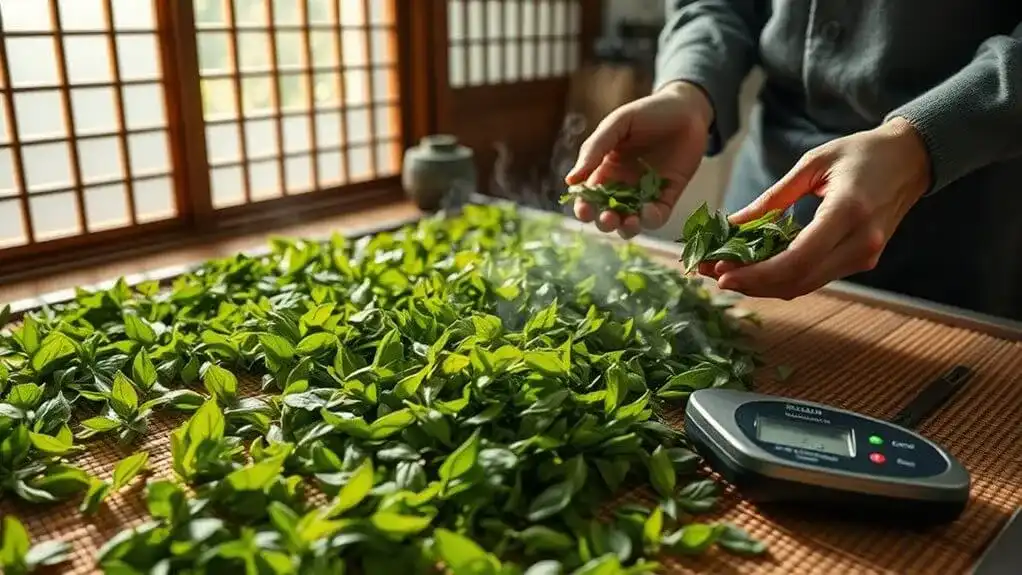
Successful sencha production relies heavily on precise moisture control and scientific drying techniques that transform fresh tea leaves into shelf-stable products. The process follows a meticulous sequence of drying stages, each targeting specific moisture levels to preserve quality and develop the tea's characteristic attributes.
- Initial drying reduces moisture to 50% through heated air and mechanical twisting
- Secondary processing with tea rollers brings moisture down to 30%
- Final drying achieves 13% moisture while developing needle shape and aroma
- Quality control drying guarantees moisture levels stay at or below 6%
The tea undergoes careful temperature-controlled polishing and straightening to maintain its shape while preventing moisture reabsorption. Modern equipment, including tea rollers and dryers with net conveyors, guarantees uniform drying and consistent quality throughout the process. Advanced hot steam applications help prevent fermentation and reduce tannin content during the early stages of processing.
Understanding Different Sencha Varieties and Their Characteristics
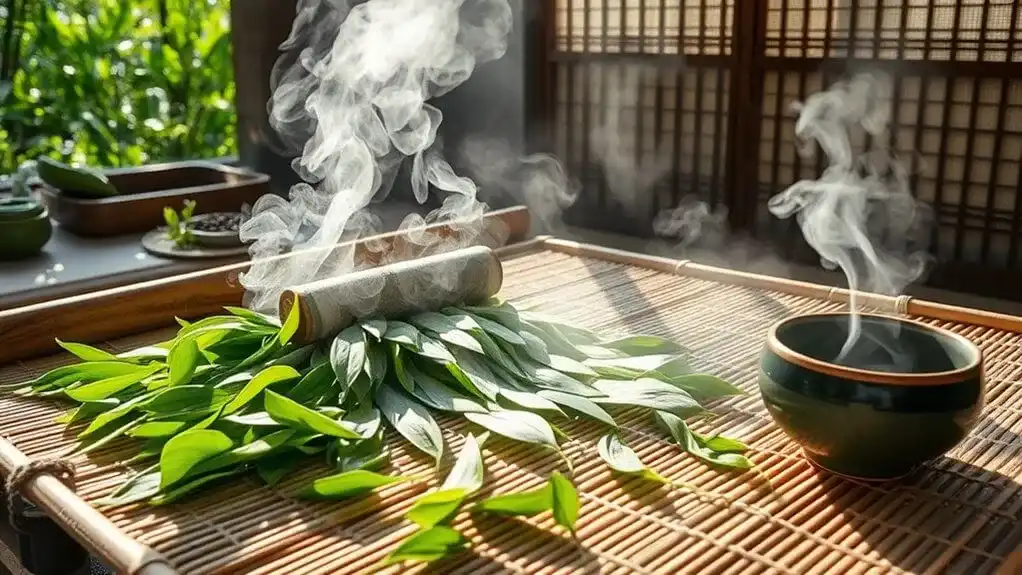
Sencha's diverse varieties showcase distinct characteristics influenced by steaming duration, harvest timing, and growing conditions. The steaming process creates several sencha varieties, from the delicate Asamushi steamed for 30 seconds to the rich Fukamushi steamed for up to two minutes. Each type offers unique flavor profiles, with lightly steamed versions presenting clean, subtle tastes while deep-steamed varieties deliver robust, oceanic notes. Representing 80% of Japanese tea production, Sencha stands as the nation's most consumed green tea variety. The preparation of these teas through formal senchadō rituals emphasizes the cultural importance of serving and appreciating sencha. The traditional brewing temperature of 158°F to 176°F helps extract optimal flavor from the leaves.
Regional variations like Uji Sencha and harvest-based types such as Shincha further expand the sencha family. Shade-grown varieties, including Gyokuro and Kabusecha, develop distinct characteristics through limited sun exposure. The leaves themselves range from thin and needle-like to broken pieces, depending on processing methods. This variety in steaming times, growing conditions, and harvest periods creates a rich spectrum of sencha experiences, each with its own distinct character.
Mastering the Perfect Sencha Brewing Method
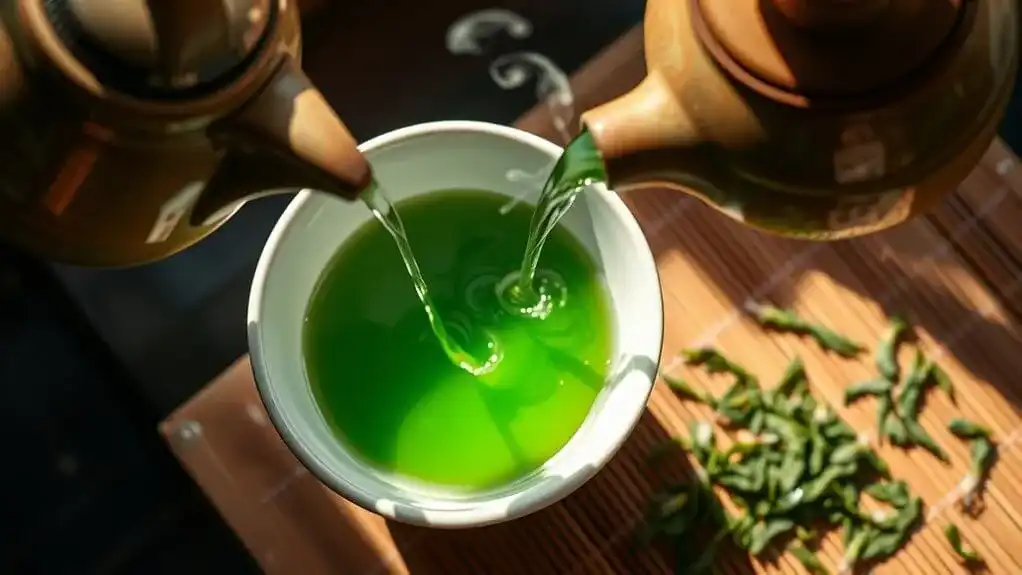
While mastering the art of brewing sencha requires attention to detail, understanding the core parameters secures consistent results. Proper brewing ratios guarantee peak flavor extraction, with 1-2 grams of leaves per 50 mL of water serving as a standard guideline. Water temperature plays a vital role, ideally ranging between 140-170°F (60-76°C), as excessive heat can lead to unwanted bitterness. Many tea enthusiasts use a yuzamashi cooling vessel to achieve optimal brewing temperatures. Pre-warming your teacups with hot water ensures proper heat retention.
- Use 3-5 grams of leaves per 150-500 mL water for traditional brewing
- Maintain first infusion time at 60 seconds for regular sencha
- Reduce steeping time to 45 seconds for fukamushi varieties
- For cold brewing, steep 5-10 grams in 500 mL water for 1-3 hours
Each subsequent infusion requires slightly higher temperatures and shorter steeping times, allowing for multiple flavorful cups from the same leaves.
The Role of Tea Cultivars in Sencha Quality

The selection of tea cultivars shapes every aspect of sencha's final character, from its taste profile to production yield. Yabukita, Japan's dominant cultivar, accounts for 75% of all tea fields and 90% in Shizuoka, prized for its balanced flavor and cold resistance. While cultivar diversity exists with over 100 varieties in use, each brings unique flavor nuances to sencha production. Master Tea Blenders carefully select cultivars to create high-quality blends that meet consumer expectations.
Regional preferences play a significant role, with southern regions like Kirishima embracing varied cultivars such as Henta Saemidori and Okumidori, while northern areas stick to frost-resistant Yabukita. Sayama Kaori offers distinctive floral and woody notes, though its particular astringency isn't universally appreciated. Producers often blend different cultivars to achieve specific flavor profiles, while some offer single-origin teas to showcase individual cultivar characteristics. The quality and taste of sencha can be further enhanced through steaming duration, with processing times ranging from 30 to 200 seconds.
Traditional Japanese Tea Tools and Their Uses
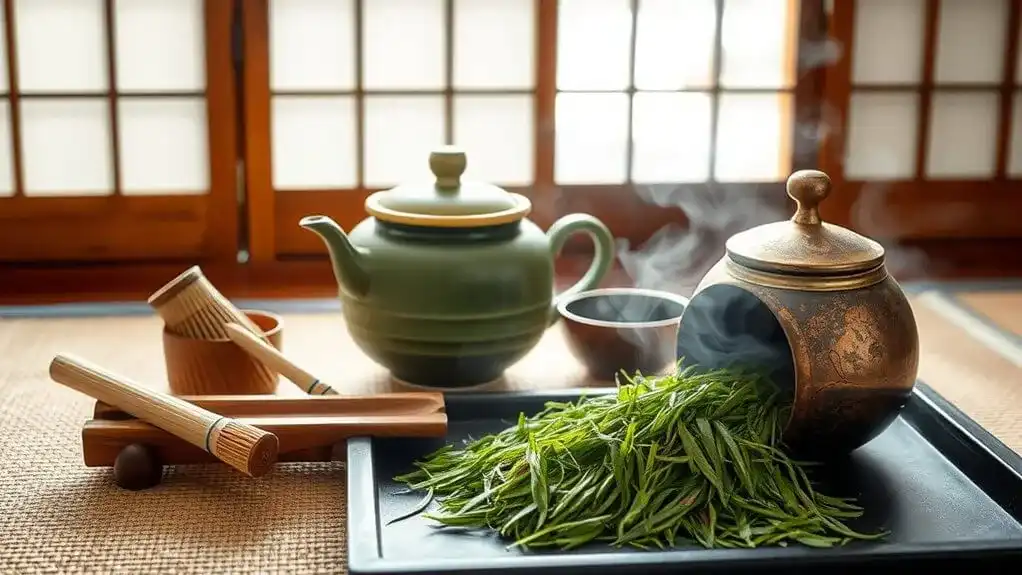
Japanese tea preparation relies on a carefully curated set of traditional tools, each serving a specific purpose in the brewing process. From essential brewing equipment to specialized matcha preparation instruments, these tools maintain the authenticity of Japanese tea culture. The kyusu, a traditional teapot, works alongside the yuzamashi to guarantee proper water temperature for delicate green teas. The side handle design of the kyusu allows for precise and comfortable pouring of tea. The fukusa, a traditional silk cloth, is used to ritually purify tea utensils before preparation. Clay teapots are particularly valued as they retain heat effectively during the brewing process.
- Tea storage containers like chazutsu and natsume preserve the freshness and flavor of loose-leaf teas and matcha powder
- The chasen and chashaku are essential for proper matcha preparation, creating the perfect froth and consistency
- Modern alternatives like tea filters and brewing baskets offer practical solutions for everyday tea brewing
- Traditional tea ceremony utensils come in various styles and materials, reflecting the depth of Japanese tea culture
Conclusion
Sencha's time-honored traditions flow like a crystal stream through Japan's tea culture, enriching both body and spirit. Today's sencha production masterfully balances traditional craftsmanship with modern innovation, ensuring this revered green tea's legacy continues. Whether hand-rolled or machine-processed, sencha's distinct umami flavor and meticulous brewing methods represent the pinnacle of Japanese tea artistry, making every cup a tribute to centuries of refined expertise.
